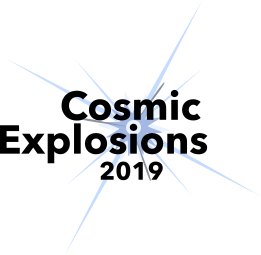Orateur
Description
An estimate of the jet inclination relative to the accreting black hole's spin can be useful to probe the jet triggering mechanism and the disc-jet coupling. Tidal Disruption Event (TDE) of a star by a supermassive spinning black hole provides a unique astrophysical laboratory to study the jet direction through the possibility of jet precession, induced by the Lense-Thirring precession of the disc or by other mechanisms. In this work, we investigate the Swift XRT light curve of a well-sampled jetted TDE, Swift J1644+57. We use a new method to compare some useful aspects of the dips of this X-ray light curve with our jet precession model to find an upper limit of the jet inclination angle. This method does not require a known jet precession period and works even if many dips are not due to jet precession. Employing this method for the thick disc regime of the X-ray light curve, we conclude that the jet inclination with respect to the black hole spin axis, or the black hole spin-precession axis if the spin axis precesses, is likely less than 10 degrees for Swift J1644+57. We will then discuss its effect on the stellar dynamics near the supermassive black hole.

